The Travellers Club Paris: A Step into History
Located on the Champs-Élysées, the Travellers Club Paris is a members-only establishment that has quietly preserved its exclusive reputation since its founding in 1903. Housed in the Hôtel de la Païva, a 19th-century mansion built for the famous courtesan and socialite Esther Lachmann, better known as La Païva, the building itself carries an air of opulence and historical intrigue. The mansion was originally constructed as a monument to luxury and decadence, with its elaborate interiors and grand architecture symbolizing the wealth and influence of its owner. Today, it serves as the perfect setting for a club that values tradition and exclusivity.
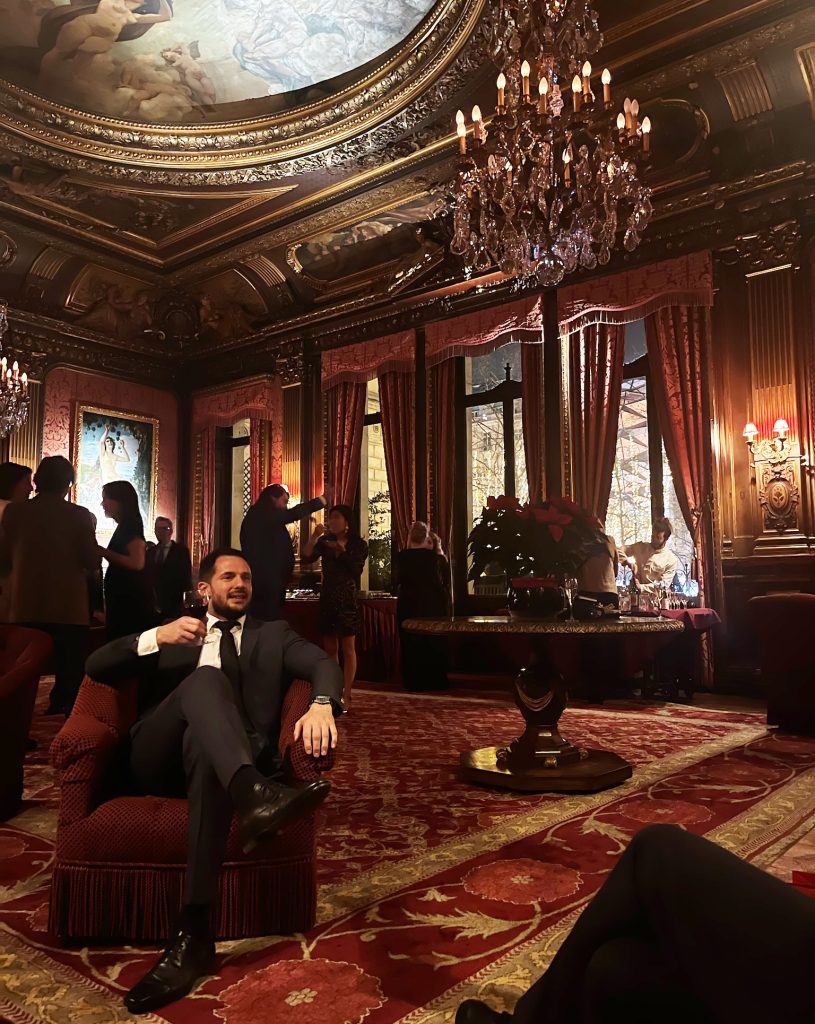
A moment of sophistication: A well-dressed gentleman enjoys a glass of wine in the elegant dining room of the Travellers Club, Paris. Photo: Albane Le Marié
A Unique Arrival
Visitors enter the club through grand wooden doors that give way to an atmosphere of quiet refinement. An old elevator with steel shutters transports guests to their rooms, though the luggage might follow separately due to its compact size. The club’s charm is understated but tangible, offering a sense of retreat from the city’s busy streets.
The rooms reflect individual character, with themes that hint at travel and exploration. One such room, named “Les Indes,” features decor inspired by colonial India, with murals depicting tiger hunts and elephants. Through its arched windows, one can catch a glimpse of the Eiffel Tower in the distance, a reminder of the club’s location at the heart of Paris.
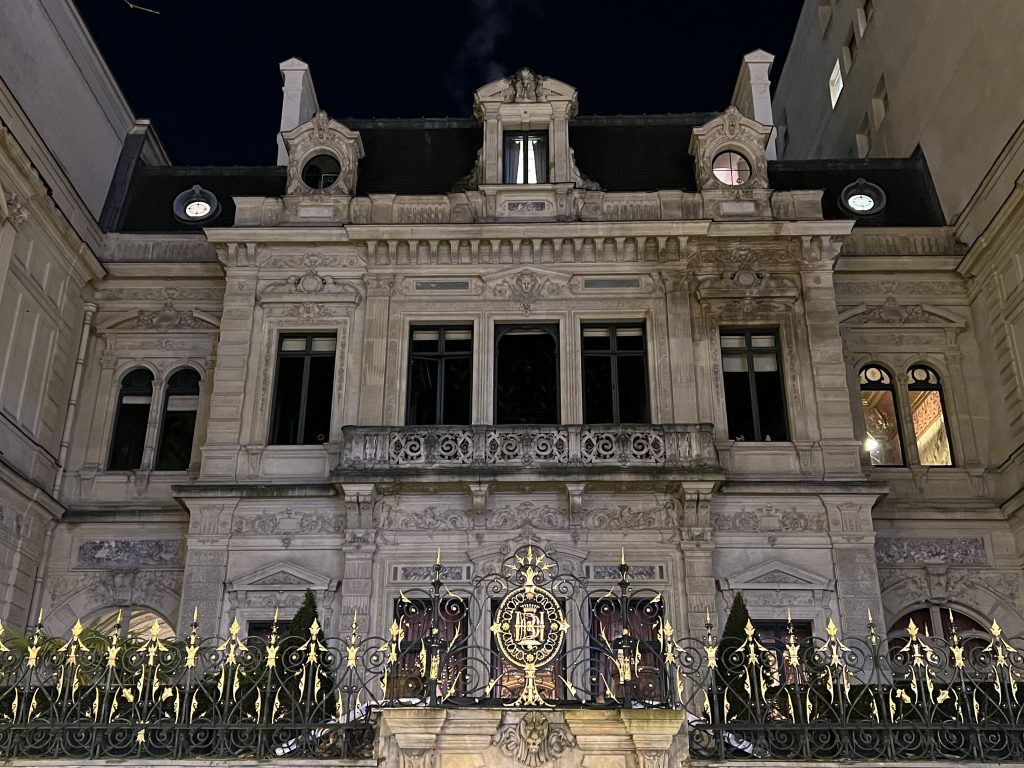
The magnificent Hôtel de la Païva, now home to the prestigious Travellers Club, graces the Champs-Élysées in Paris. Photo: Fredrik Hagblom
Architectural Highlights
The Travellers Club is renowned for its architectural details, particularly its central spiral staircase. Crafted from yellow onyx in the Italian Renaissance style, the staircase is a focal point of the club. Statues of poets such as Virgil and Dante are positioned along the way, subtly underscoring the club’s emphasis on culture and heritage. Hidden doors and ornate dining rooms add to the sense of exclusivity, making every corner feel like a preserved piece of history.
The Hôtel de la Païva itself is a masterpiece of 19th-century architecture, with intricate carvings, marble accents, and gilded details that reflect its luxurious origins. Its history as a gathering place for influential figures adds another layer of significance to the Travellers Club’s present-day identity.
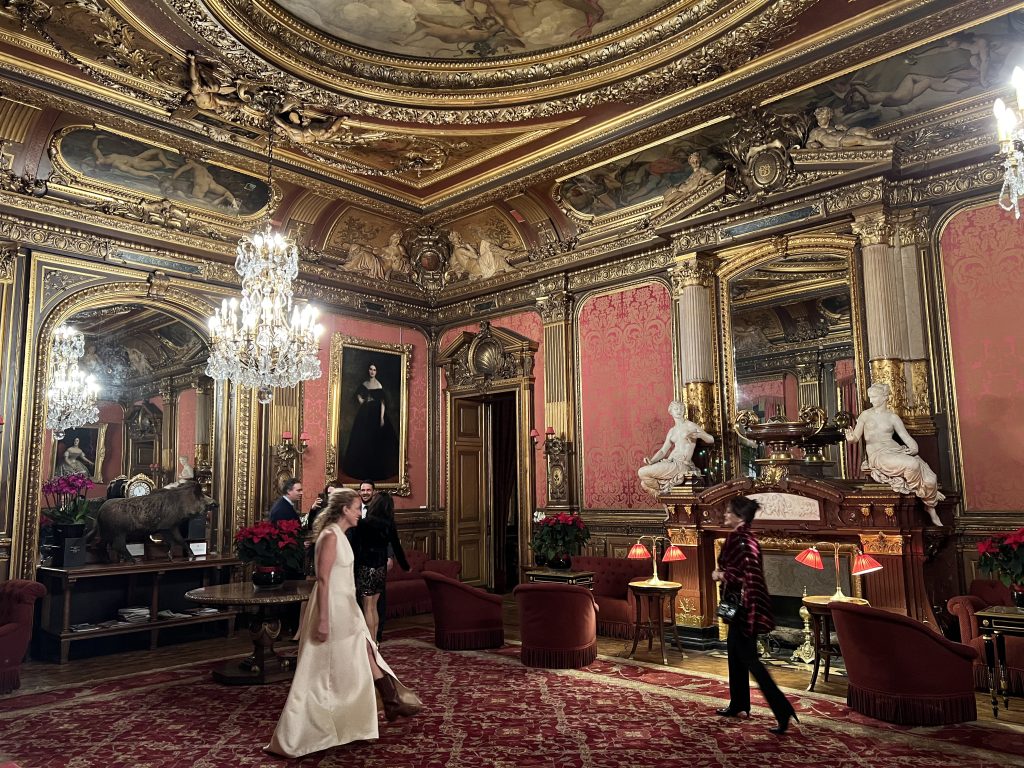
Life Inside the Club
The Travellers Club offers its members spaces for both leisure and business. A well-stocked bar and a billiards room provide a relaxed atmosphere for informal gatherings. Meanwhile, the dining areas serve as venues for more formal occasions, with menus and service designed to reflect the club’s standards.
While much of the club is reserved for its members, guests are occasionally welcomed by invitation. The experience of staying at the Travellers Club is as much about the ambiance as it is about the amenities. Breakfast is a quiet affair, served in rooms with fine china and silverware that evoke a bygone era.
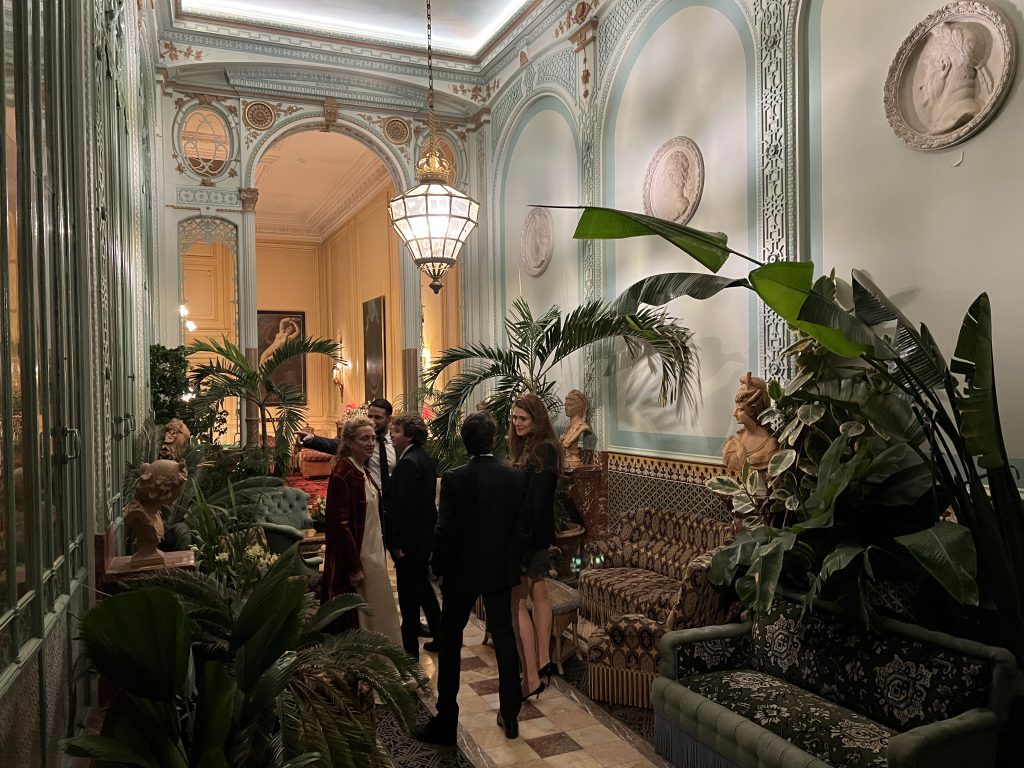
Guests mingling in the vintage-inspired Winter Garden of the Travellers Club, Paris, a space steeped in historical character. Photo Fredrik Hagblom
A Reflection of Tradition
Though the Travellers Club maintains an air of exclusivity, it is also a reflection of enduring traditions. The building’s history, combined with its commitment to preserving its original character, makes it a unique part of Paris’ cultural fabric. For those who pass through its doors, it offers a rare glimpse into a world that values privacy, heritage, and understated elegance.
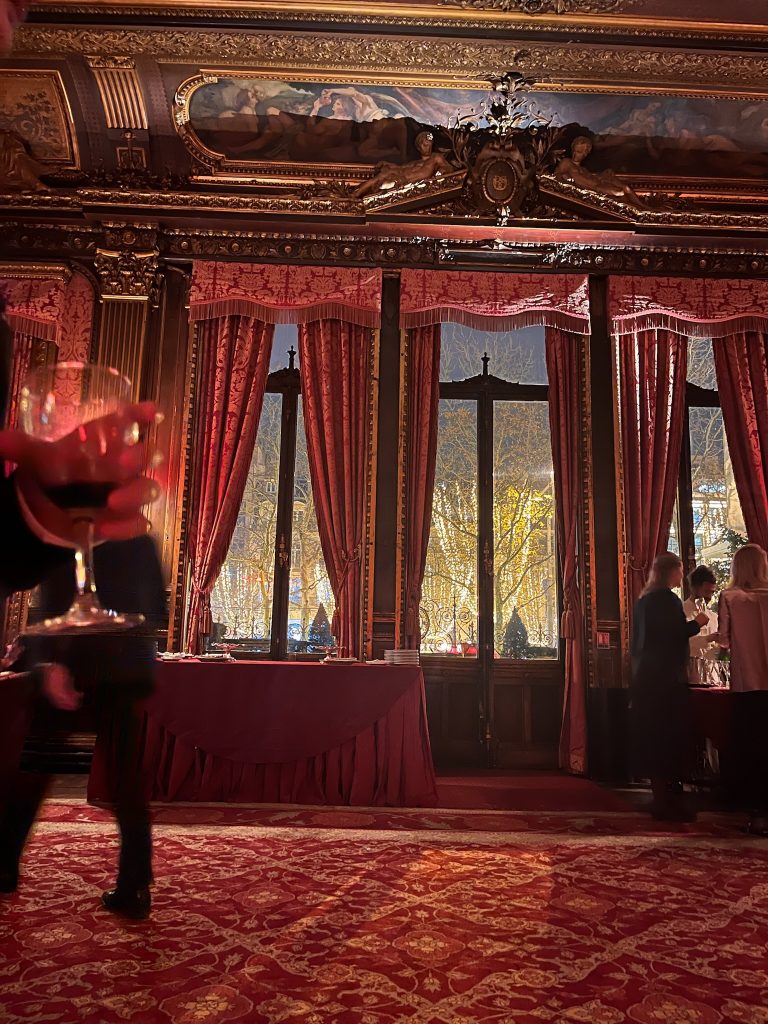
An evening in the dining room of the Travellers Club, with the lights of the Champs-Élysées glowing through the windows. Photo Albane Le Marié
Visiting the Travellers Club
For those captivated by the mystique of the Travellers Club, visiting this storied institution can be a challenge. As a private members-only club, entry is generally restricted to members and their invited guests. Membership itself is an exclusive process, often requiring recommendation by current members and a demonstrated connection to travel, exploration, or intellectual pursuits aligned with the club’s ethos.
If you’re not a member, gaining access might seem elusive. However, the club occasionally opens its doors to the public during special events or on European Heritage Days (Journées Européennes du Patrimoine), when historic and cultural sites across the continent allow visitors to step inside. While these occasions are rare, they offer a unique opportunity to explore the club’s stunning architecture, historic collections, and ambiance steeped in tradition.
Alternatively, some professional or academic gatherings hosted by the club may grant entry to non-members, though these events are typically invitation-only. A more approachable route might involve seeking out connections with current members who could extend an invitation, keeping in mind the club’s strict codes of conduct and decorum.
Notable Members of the Travellers Club, Paris
Since its establishment in 1903, the Travellers Club has attracted a distinguished roster of members from various spheres of influence. Noteworthy individuals include:
- Valéry Giscard d’Estaing: Former President of France, serving from 1974 to 1981, known for his efforts to modernize the country and his role in advancing European integration.
- Maurice Druon: Renowned novelist and member of the Académie Française, celebrated for works such as “Les Rois maudits” (“The Accursed Kings”).
- David de Rothschild: Prominent banker and member of the Rothschild banking family, recognized for his significant contributions to international finance.
- Charles Beigbeder: Entrepreneur and businessman, known for founding companies in the technology and finance sectors, and for his involvement in French politics.
- Frédéric Beigbeder: Acclaimed author and literary critic, known for novels such as “99 Francs” and his contributions to French literature and media.
- These esteemed individuals have contributed to the club’s rich legacy, fostering an environment of intellectual exchange and cultural refinement.
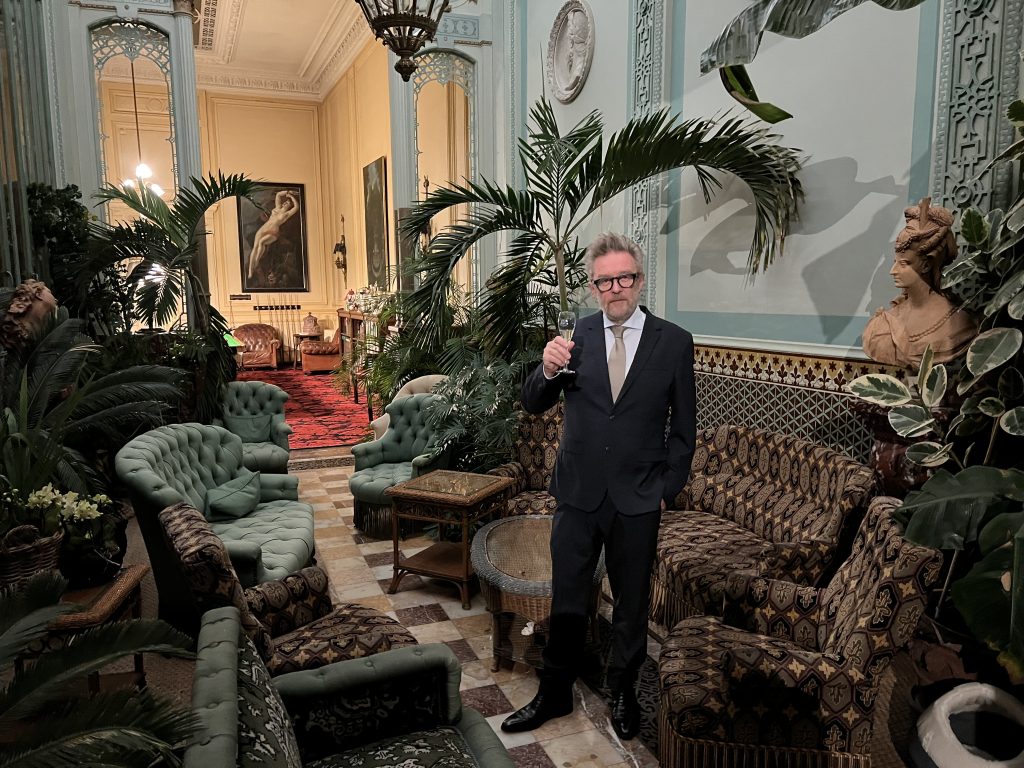
Yours truly dressed in acquired attire at the winter garden of the Travellers.
Rules and regulations of the Travellers Club, Paris
Related articles
